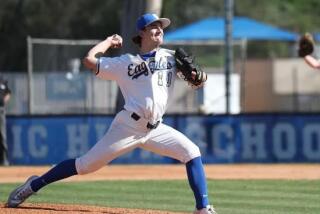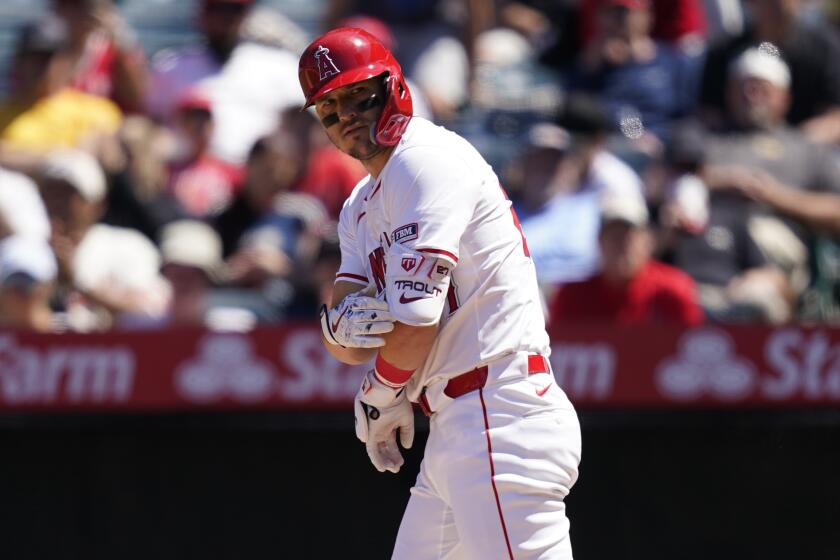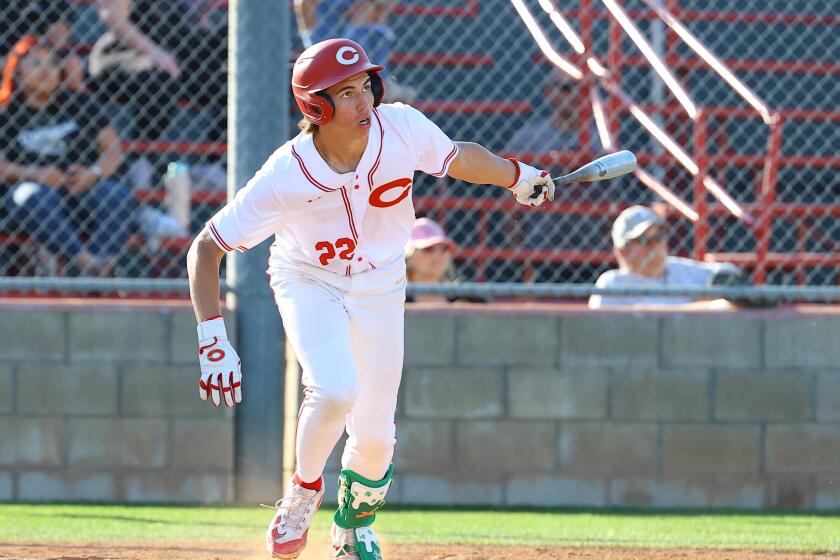Retooling of Fontana race track is on idle
Auto Club Speedway proposed a multimillion-dollar revamp of the Fontana track to foster closer racing and boost crowds at its two annual NASCAR Sprint Cup races, but the track’s owner has taken no action on the plan, The Times has learned.
The plan called for raising the banking of the track’s four turns to 23 degrees from the current 14 degrees and narrowing its width in certain sections, all to bring the cars closer together and promote more passing, according to motor racing sources familiar with the proposal who agreed to speak on the condition that they not be identified.
Making the changes probably would cost $23 million to $30 million and could be completed between the track’s two NASCAR race dates, and would involve digging up the entire turns to make their banking steeper, they said.
The proposal follows repeated criticism that the Fontana track’s current layout -- a wide, D-shaped oval two miles long with relatively flat corners -- produces races that are too boring. One writer dubbed the Fontana track the “slumberdome,” especially since NASCAR’s Car of Tomorrow chassis started being used full-time in the Cup series last year.
Since 2004, the speedway has failed to sell out its 92,000 grandstand seats for its twice-a-year NASCAR Cup races.
Built in the mid-1990s, Auto Club Speedway is a fast, sweeping track where NASCAR stock cars often become spread out, diluting the side-by-side racing and frequent passing that so many NASCAR fans favor.
Reconfiguring NASCAR tracks -- mainly by raising their corner banking, which tends to promote closer racing through the turns -- has been done at other venues such as Homestead-Miami Speedway in Florida and Las Vegas Motor Speedway.
The 565-acre Auto Club Speedway, formerly called California Speedway, is 50 miles east of Los Angeles and holds its next NASCAR Sprint Cup race Oct. 11. Its other race is in February.
After this year’s February race, Auto Club Speedway President Gillian Zucker proposed the reconstruction plan to the track’s owner, International Speedway Corp., the sources said.
But International Speedway’s board of directors has taken no action on the idea, including at a meeting last month, largely because the project is too costly at a time when the company, which owns or operates 13 tracks, is struggling with the weak economy and slumping attendance, the sources said.
The company said in July that its capital spending on all of its existing facilities this year would be $50 million to $55 million -- excluding spending on its new Daytona Beach, Fla., headquarters -- so the Fontana project alone would amount to roughly half that sum.
International Speedway’s board is led by the members of the France family that also control the sanctioning racing body NASCAR.
Zucker declined to confirm or deny the proposal. But she said in a statement that “it’s no secret that making Auto Club Speedway the most competitive NASCAR track on the circuit is something I have been advocating since I arrived here four years ago.”
International Speedway spokesman Lenny Santiago also declined to comment on the plan but said “potential projects are discussed internally on a regular basis for all of our facilities.”
Each of Fontana’s NASCAR Cup races generally have drawn between 70,000 and 90,000 in the grandstands since the track began staging two races a year in 2004. Add the roughly 10,000 who fill its infield, and the track draws one of the largest one-day crowds for a Southland sporting event.
Even so, the region’s huge population and NASCAR’s popularity keep raising the question as to why the track doesn’t sell out.
It has been blamed on several factors, including the difficulty of competing with other entertainment available to Southern Californians; the economic recession that has eroded attendance at other sporting events nationwide, and poor weather at times.
The track’s second race had been held Labor Day weekend, when temperatures sometimes soared into the triple digits. So starting this year, NASCAR moved that race to October, and now the Pepsi 500 is part of NASCAR’s 10-race Chase for the Sprint Cup playoff that determines the series champion.
--
More to Read
Get our high school sports newsletter
Prep Rally is devoted to the SoCal high school sports experience, bringing you scores, stories and a behind-the-scenes look at what makes prep sports so popular.
You may occasionally receive promotional content from the Los Angeles Times.






